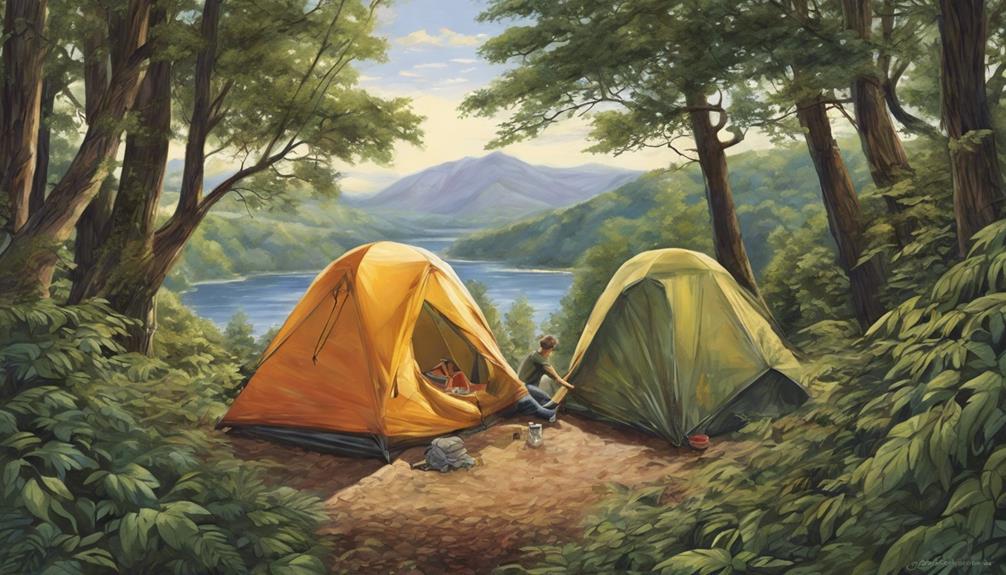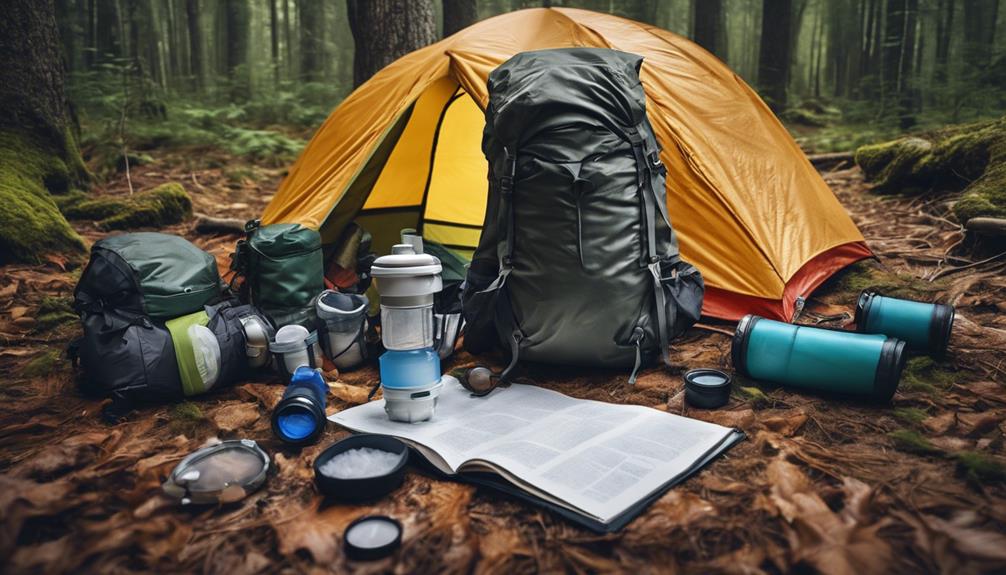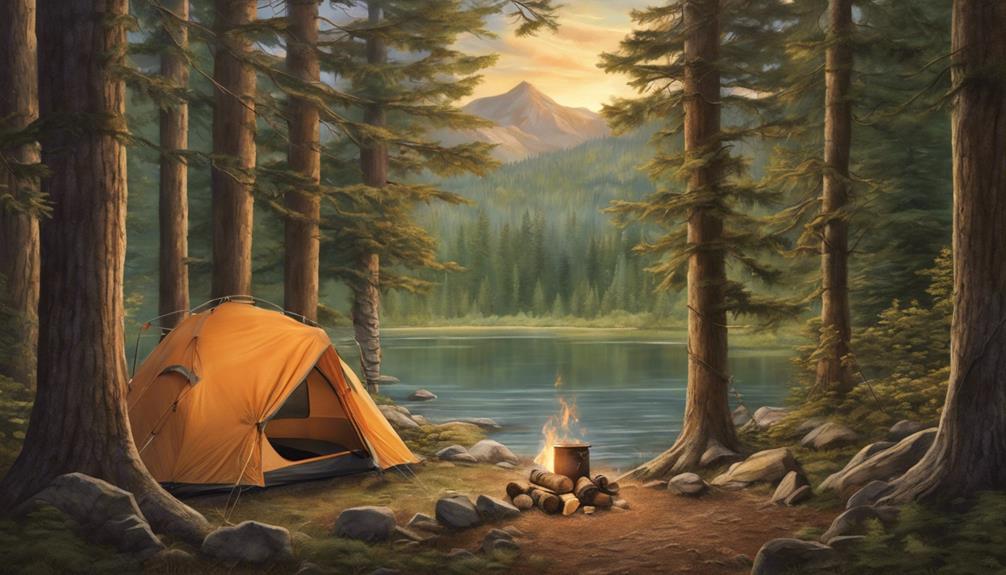When exploring the wild on your own, it’s crucial to be ready like a seasoned adventurer mapping unknown lands. Dive into the adventure and unveil the secrets of the great outdoors for an unforgettable experience.
The solitude of solo camping offers a unique connection to nature, but it also demands a heightened sense of caution and preparedness.
As the sun begins to set and the forest whispers around you, the knowledge of essential safety practices becomes more than just a guide; it becomes a lifeline.
So, what are some key elements to consider when embarking on a solo camping expedition? Stay tuned to uncover the crucial components that can make or break your solitary communion with the great outdoors.
Key Takeaways
- Carry a well-equipped first aid kit and inform someone of your camping location.
- Prioritize flat, safe campsite selection away from wild predators.
- Equip with emergency communication devices and avoid unnecessary risks.
- Research local wildlife, minimize food odors, and respect wildlife habitats for safety.
Basic Solo Camping Gear Checklist
When embarking on a solo camping adventure, ensuring you have the right gear is paramount for a safe and enjoyable experience. The first item on the essential gear checklist for a solo camping trip is a high-quality sleeping bag. A warm, well-insulated sleeping bag is crucial for a restful night's sleep, especially when camping alone.
Alongside the sleeping bag, a reliable headlamp is indispensable. Whether you're setting up camp after sunset or need to navigate in the dark, a headlamp provides hands-free illumination, enhancing both safety and convenience.
Another vital piece of equipment for solo camping is a water filtration system. Access to clean drinking water is essential for survival in the wilderness, making a portable water filtration system a must-have for solo campers.
Essential Wilderness Safety Guidelines
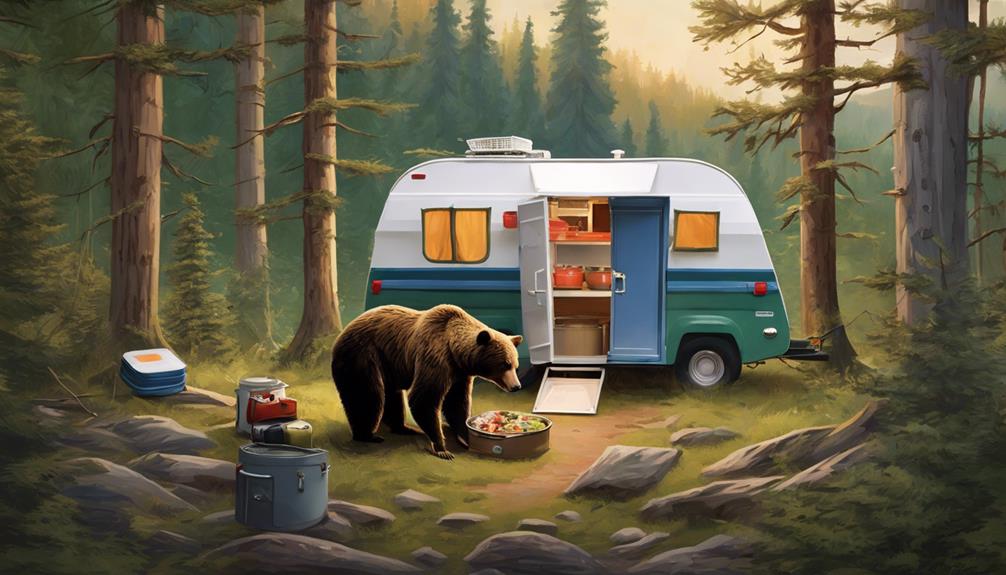
Exploring the wilderness demands a keen understanding of essential safety guidelines to navigate and thrive in the great outdoors. When venturing into the wild, it's crucial to carry a well-equipped first aid kit and have the knowledge to administer basic first aid in case of emergencies.
Familiarize yourself with local wildlife and potential hazards, taking necessary safety precautions to prevent wildlife encounters. Adhering to Leave No Trace principles ensures you minimize your impact on the environment, preserving the natural beauty for future adventurers. Always inform a trusted individual of your camping location and expected return time for added security.
Prioritize safety by staying aware of your surroundings, potential risks, and changing weather conditions. Additionally, be prepared for unforeseen situations like getting lost by having essential solo camping gear such as a camping stove and proper sleeping arrangements. By following these wilderness safety guidelines, you can enjoy the freedom of solo camping while staying safe and prepared.
Campsite Selection and Preparation Tips
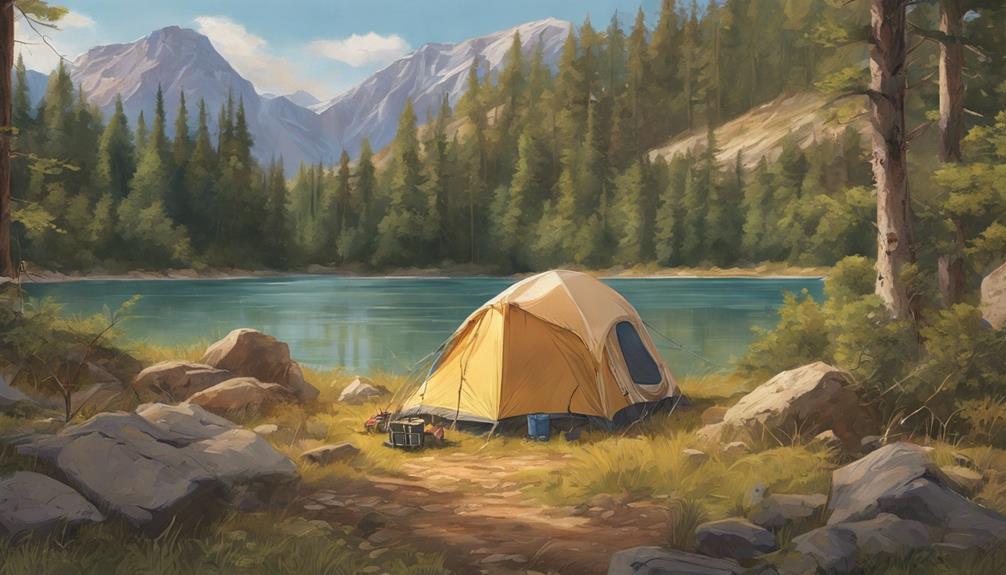
Before setting up camp in the wilderness, locating a suitable campsite plays a pivotal role in ensuring a safe and enjoyable solo camping experience. When choosing a campsite, prioritize flat terrain for easy tent setup and movement. Safety is paramount, so avoid areas with wild predators or poisonous plants.
Research online reviews to find spots with reliable reception for communication in case of emergencies. Look for campsites near trails or roads to facilitate exploration and access to help if needed. A comfortable campsite can make a big difference, so consider factors like shade and proximity to water sources.
Be cautious of potential hazards such as steep cliffs or volatile weather conditions. By preparing well and choosing wisely, solo campers can create a secure and pleasant environment for their outdoor adventures.
Emergency Preparedness Strategies
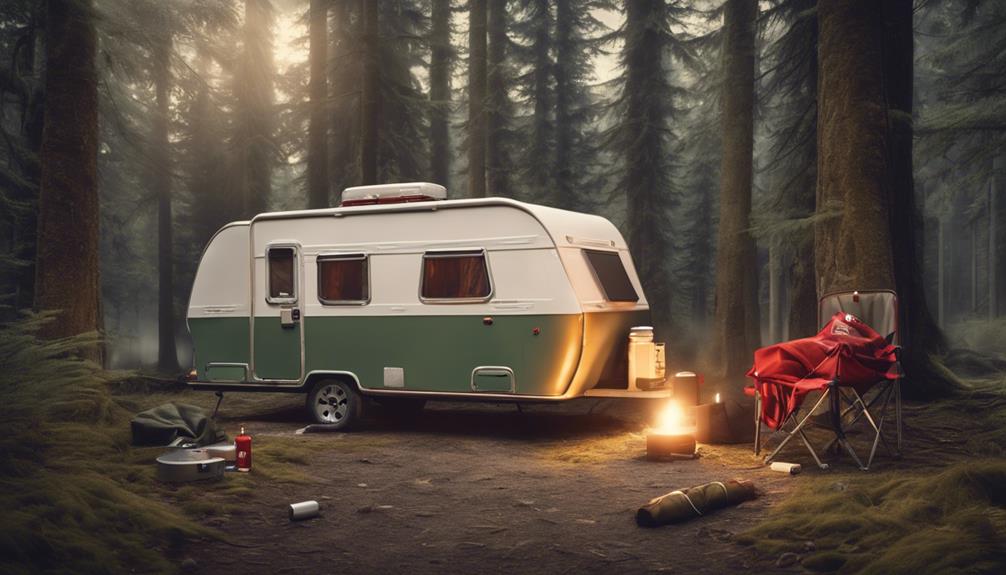
To enhance safety in solo camping expeditions, it's essential to equip oneself with emergency devices such as a satellite phone or locator beacon for effective communication during unforeseen circumstances. These GPS devices or personal locators can be lifesavers in emergencies, allowing solo campers to communicate distress signals and their exact location for swift rescue operations.
Additionally, informing a trusted person about the camping itinerary adds an extra layer of safety, ensuring that someone is aware of the plans and can take action if needed.
Prioritizing safety measures while solo camping is crucial to minimize risks and ensure a secure outdoor experience. Avoiding unnecessary risks during activities like hiking and exploring can help prevent accidents or injuries. Moving cautiously in the environment, being aware of surroundings, and being prepared for unforeseen events are all part of emergency preparedness strategies for solo campers.
Wildlife Interaction and Safety Measures
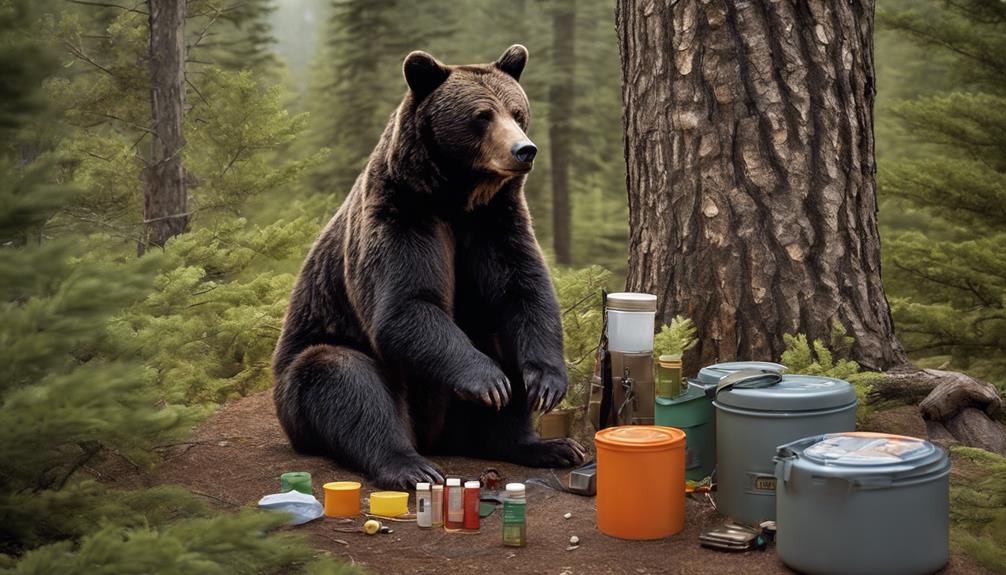
When venturing into the wilderness for a solo camping adventure, understanding wildlife behavior and implementing safety measures is paramount to a successful and secure outdoor experience. Researching native wildlife in the camping area is crucial to anticipate potential encounters with specific species. Minimizing food odors and properly storing food are essential to avoid attracting wildlife to the campsite. Using bear-proof containers or hanging food away from the campsite can prevent wildlife interactions and keep both campers and animals safe.
Taking wildlife precautions such as making noise while hiking can alert wildlife of your presence, reducing the chances of surprising them. It's important to respect wildlife and their habitats by observing them from a safe distance and refraining from feeding or approaching them. By following these wildlife safety measures and showing wildlife respect, campers can enjoy a harmonious coexistence with nature during their solo camping expedition.
Frequently Asked Questions
How Safe Is Solo Camping?
Solo camping is generally safe when campers take precautions and follow guidelines. Risks can be minimized by informing others of the itinerary and carrying emergency equipment. Confidence and empowerment often result from successful solo camping experiences.
What to Do While Solo Camping?
While solo camping, one can engage in nature activities like hiking, fishing, or birdwatching to fully immerse themselves outdoors. It's an opportunity to practice mindfulness, connect with nature, and capture memorable moments for lasting memories.
How to Camp Alone as a Woman?
When camping alone as a woman, trust instincts, choose populated sites, carry self-defense tools, keep campsite tidy, and connect with fellow solo campers. Safety first, remain cautious of strangers, and find adventure with peace of mind.
When You Go Camping What Are 3 Things You Need to Take With You?
When heading out camping, one must always bring a trusty first aid kit, navigation tools, and appropriate clothing. These essentials ensure safety and comfort, allowing adventurers to explore the great outdoors with peace of mind.
Are the Safety Tips for Solo Woman Camping Different from the Essential Solo Camping Safety Guide?
Yes, the safety tips for solo woman camping may differ slightly from the essential solo camping safety guide. It is important for women to take extra precautions, such as packing self-defense items, choosing a safe campsite, and being mindful of their surroundings. Safety should always come first.
Conclusion
In conclusion, remember to pack your gear, follow safety guidelines, and stay prepared for any emergencies while solo camping.
With proper planning and precautions, you can enjoy the wilderness with peace of mind.
Stay safe, stay savvy, and savor the serenity of solo camping!


